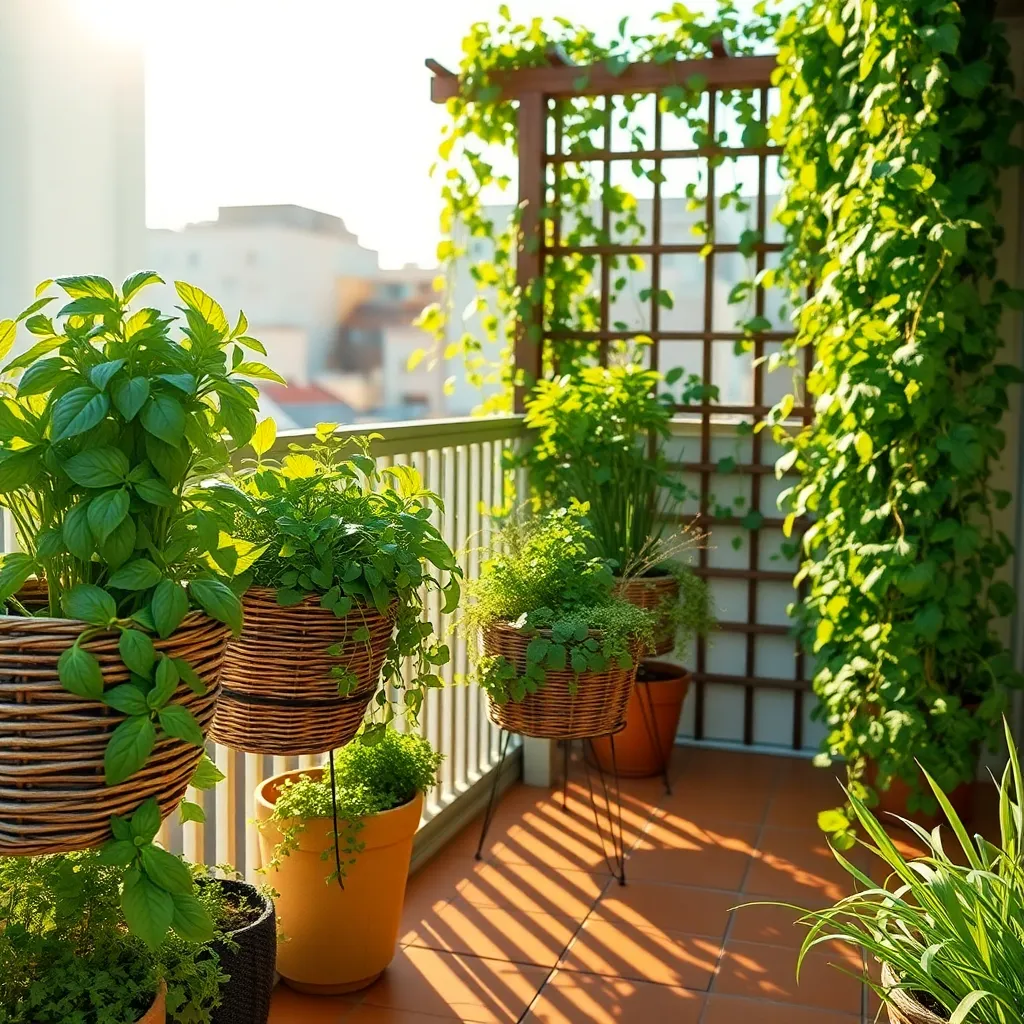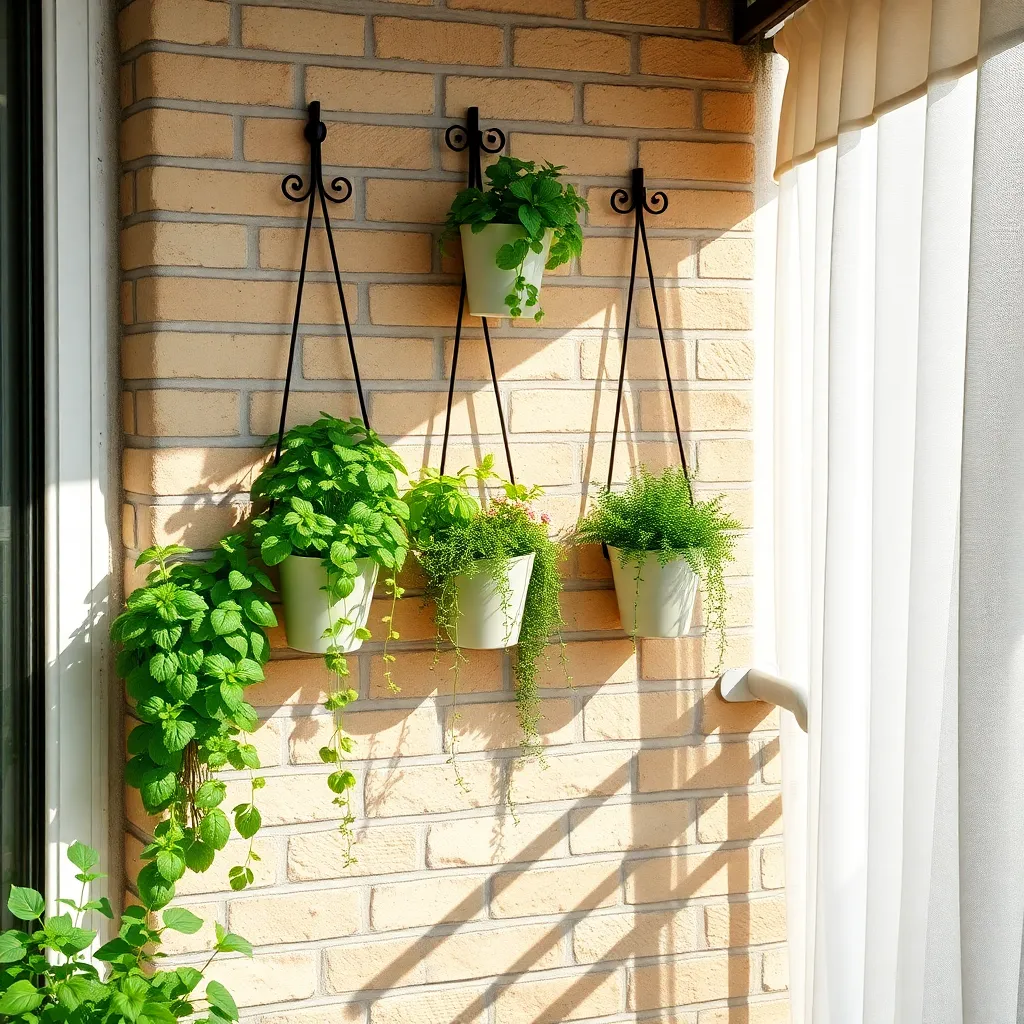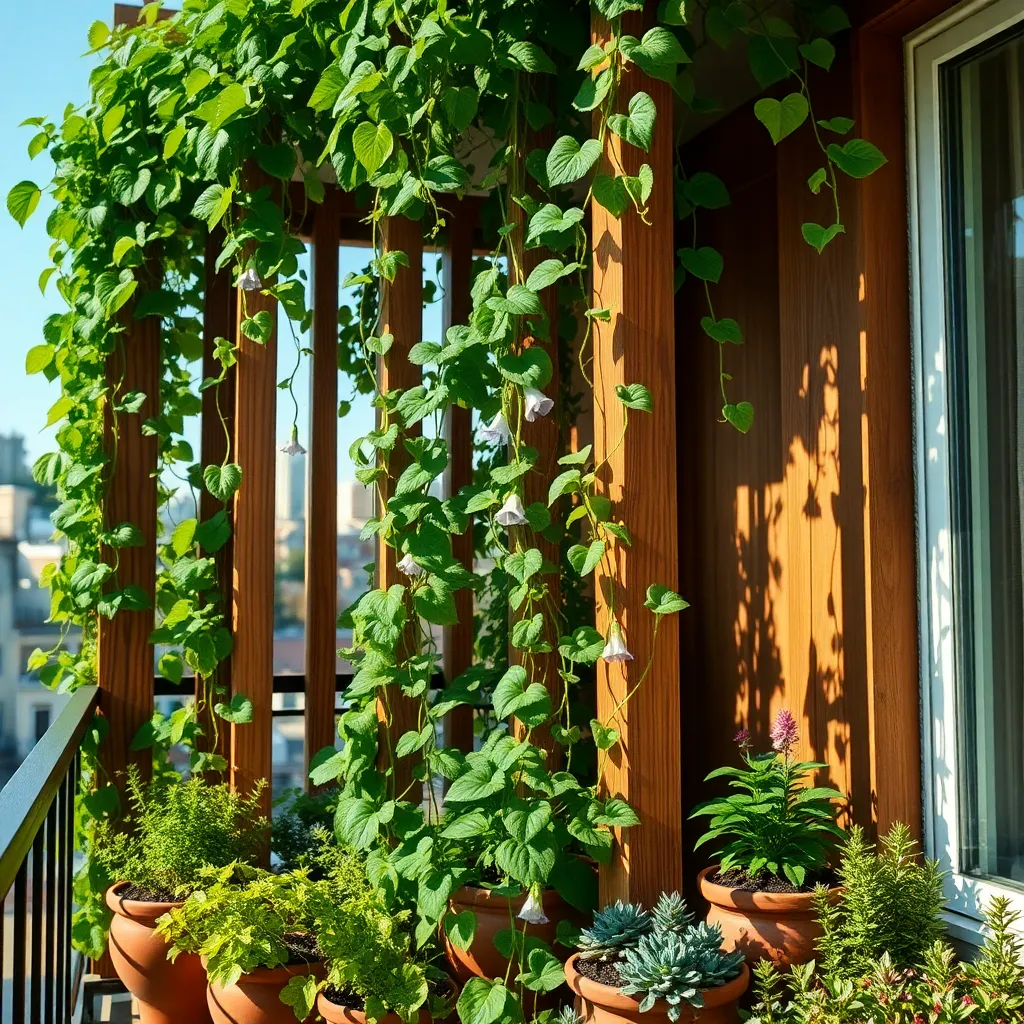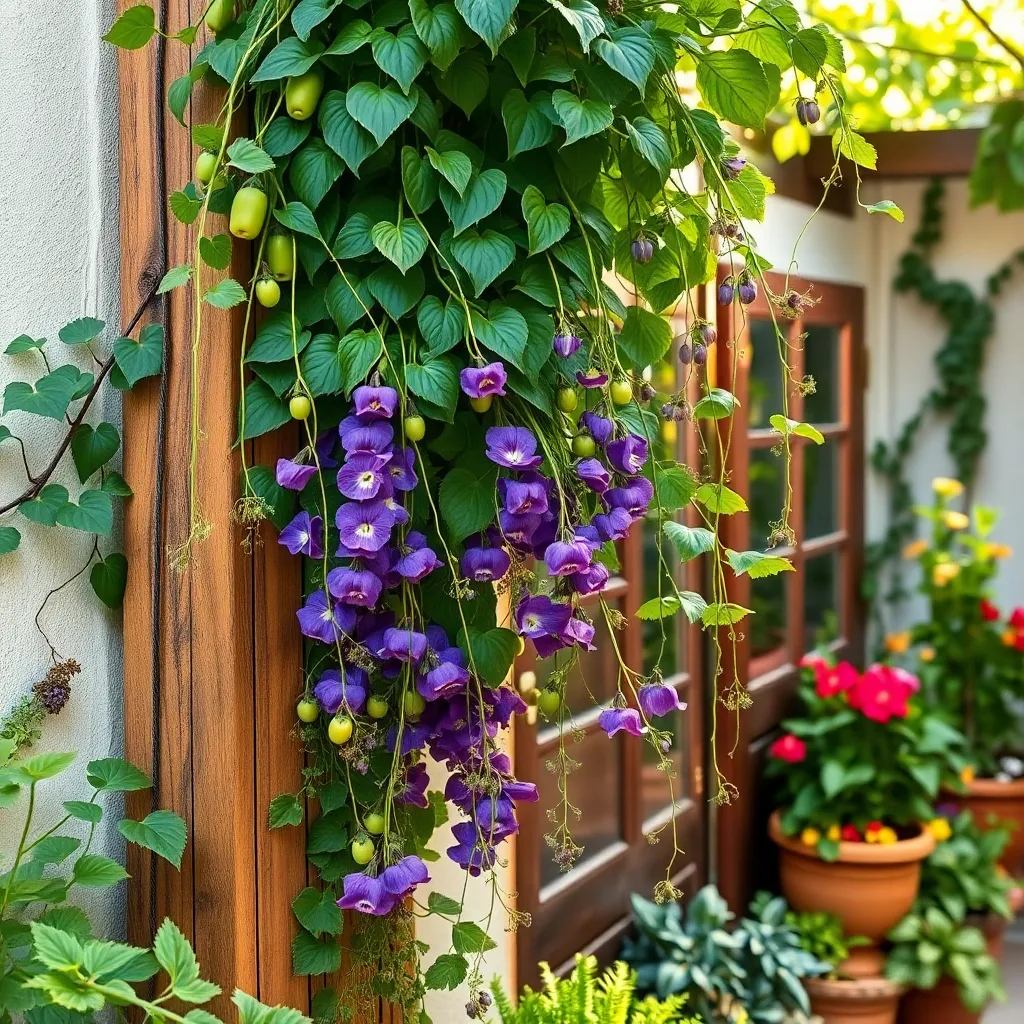Imagine transforming a small, overlooked corner of your home into a lush, vibrant oasis bursting with life. Whether you’re a novice gardener taking your first steps or a seasoned green thumb always on the lookout for new challenges, vertical gardening offers an exciting opportunity to maximize your space and creativity. This guide is brimming with innovative ideas tailored to fit any small space, ensuring that every gardener can find a solution that suits their needs and style.
From creating a cascading wall of herbs in your kitchen to designing a spectacular balcony garden, the possibilities are as limitless as your imagination. You’ll discover practical benefits like improved air quality, fresh produce at your fingertips, and the undeniable satisfaction of nurturing your own green sanctuary. By the end of this guide, you’ll feel empowered and excited to embark on your vertical gardening journey, confident that success is within your reach.
Choose Lightweight Planter Materials

Choosing lightweight planter materials is essential for vertical gardening, especially in small spaces. Lightweight materials, such as plastic, fiberglass, or fabric, reduce the load on your walls or garden structures, making them safer and more versatile for various setups.
Consider using fabric pots or wall pockets for a flexible and breathable option. These materials allow for excellent air circulation and drainage, promoting healthier root growth and making them ideal for plants like herbs and succulents that prefer well-aerated soil.
For those seeking a more decorative touch, fiberglass planters offer a lightweight yet durable alternative. Fiberglass can mimic the appearance of heavier materials like stone or terracotta, allowing you to maintain a stylish look without the added weight.
When selecting planters, ensure they have adequate drainage holes to prevent waterlogging. Regularly check the moisture levels of your plants as vertical gardens can dry out faster due to increased exposure to wind and sun, requiring more frequent watering.
Utilize Wall-Mounted Pot Holders

Wall-mounted pot holders are an excellent way to maximize vertical space, especially in small gardens. These holders allow you to elevate your plants, creating a lush and vibrant display without crowding your floor space.
Consider selecting pot holders made of durable materials like metal or treated wood to withstand various weather conditions. For easy maintenance, choose holders with a sleek design that allows for efficient drainage and airflow, which are crucial for healthy plant growth.
When mounting the pot holders, ensure they are securely fastened to support the weight of the pots and plants. Use appropriate anchors and screws for your wall type to avoid accidents and ensure stability.
Choose plants that thrive in vertical settings, such as herbs, succulents, or small flowering plants. Herbs like basil and thyme not only grow well in these conditions but also add a functional element to your vertical garden.
For optimal growth, ensure your plants receive the right amount of sunlight by positioning your wall-mounted holders accordingly. If your space has limited natural light, consider using grow lights to supplement and encourage healthy plant development.
Remember to water your plants regularly, but be mindful of overwatering, which can be common in wall-mounted pots without proper drainage. A good practice is to check the soil moisture level before watering; the top inch should be dry before you add more water.
Install Vertical Trellis Systems

Vertical trellis systems are a fantastic way to maximize space in small gardens. They allow you to grow climbing plants such as peas, beans, and cucumbers vertically, freeing up ground space for other uses.
Choosing the right materials is crucial for building a durable trellis. Opt for weather-resistant materials like cedar wood or heavy-duty metal to ensure longevity and stability.
It’s important to install your trellis in a location that receives ample sunlight, as most climbing plants thrive in full sun. Ensure that the soil beneath is well-draining and rich in organic matter to support healthy plant growth.
For beginners, start with easy-to-grow climbing plants such as pole beans or nasturtiums. These plants are forgiving and can quickly cover a trellis, providing both beauty and bounty.
Advanced gardeners might consider training perennial vines like clematis or climbing roses. These plants require more attention, including regular pruning and feeding, but offer stunning blooms as a reward.
Watering is key when using vertical trellises, as plants grown this way may dry out faster. Make sure to water deeply, ensuring that moisture reaches the root zone, which may be deeper than in traditional planting methods.
Incorporate Hanging Pocket Gardens

Hanging pocket gardens are a fantastic solution for maximizing vertical space in small areas. These versatile pockets can be attached to walls or fences, allowing you to cultivate a variety of plants without needing traditional garden beds.
Start by choosing a pocket garden made of breathable, durable fabric that can support plant growth. Ensure it has adequate drainage to prevent water from pooling at the bottom, which can lead to root rot.
Select plants that thrive in smaller spaces, such as herbs like basil, mint, or thyme, which do well in shallow soils. For a splash of color, consider adding flowering plants such as pansies or petunias, which are compact and vibrant.
When planting, use a high-quality potting mix that’s light and retains moisture well. Aim to water these pockets regularly, as they can dry out faster than traditional pots, especially in warm weather.
For more advanced gardeners, consider incorporating a drip irrigation system to maintain consistent moisture levels. This can be particularly beneficial if you live in a dry climate or have limited time for daily watering.
Fertilize your pocket garden every four to six weeks with a balanced, water-soluble fertilizer to encourage healthy growth. Regularly check for pests and disease, as the compact environment can sometimes lead to rapid spread if not managed promptly.
Opt for Climbing Plant Varieties

Climbing plants are a fantastic choice for vertical gardens, especially in small spaces where you want to maximize every inch. With their ability to grow upwards, they can create lush, living walls that add beauty and privacy.
Consider starting with easy-to-grow varieties like sweet peas or nasturtiums that provide vibrant blooms throughout the growing season. These plants thrive in well-draining soil and require full sun, making them perfect for sunny balconies or patios.
For gardeners looking to add a touch of greenery with minimal effort, ivy or Boston fern can be excellent choices. These plants are relatively low-maintenance, requiring only moderate watering and indirect sunlight to flourish.
If you’re more experienced, you might want to explore growing grapevines or kiwifruit, which can provide both ornamental beauty and delicious fruits. Ensure these plants have a sturdy support structure and are planted in nutrient-rich soil to encourage healthy growth.
Conclusion: Growing Success with These Plants
In exploring ‘Vertical Gardening Ideas for Small Spaces,’ we’ve delved into five key relationship concepts that parallel the art of nurturing a garden: communication, adaptability, resourcefulness, patience, and creativity. Just as vertical gardening offers innovative solutions for limited spaces, cultivating these qualities can transform your relationship into a thriving sanctuary, no matter the constraints.
To put these insights into action, why not start a mini project with your partner? Choose a small corner in your home and design a vertical garden together. This collaborative effort can strengthen your bond, enhance communication, and provide a tangible reminder of your shared growth.
Remember, nurturing a relationship is a journey, much like tending to a garden. Bookmark this article as a resource to revisit whenever you need a gentle nudge towards cultivating deeper connections.
As you invest in these relational practices, you’ll discover that both gardens and relationships flourish with love, attention, and intentional care. Embrace the journey, knowing that each small effort contributes to a vibrant, enduring partnership. Save this article to guide you on your path to relationship success, and let your love grow vertically and beyond.
